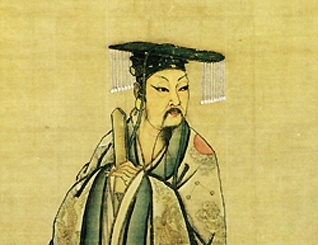The Xia Dynasty was the first traditional Chinese dynasty in recorded history. It began in 2070 B.C.E and eventually came to an end around the year 1600 B.C.E. In ancient Chinese tradition, the Xia Dynasty was started by Yu the Great, who was a great decedent of one of the mythical five great Emperors, Zhuanxu. Before historians in the 20th century discovered physical evidence of the dynasty’s existence, it was thought to be only legend. The Xia was eventually overthrown by the Shang Dynasty, which historians are certain existed. Using facts and data discovered in recent times, there has been enough evidence found to show that the Xia Dynasty did in fact exist.1

The Xia Dynasty was therefore the first real government in Chinese history. It was the first to install the practice of dynastic succession. According to many historians, a great ruler named Huang-ti, better known as the Yellow Emperor, created the traditional Chinese culture we know today. Gun, the father of Yu the Great, was the first recorded member of the Xia. During his lifetime, the great floods of the Yellow River occurred. Due to the fact that the Xia Dynasty has been shrouded in mystery, it has been discovered recently that these floods did indeed occur. According to written documents and oral tradition, Gun was appointed to stop the flooding. He ordered the construction of large walls to attempt to control the path of the water. Gun attempted to stop the floods, which lasted for nine years, but ultimately ended in failure due to the repetition of the flood’s destruction. Eventually, Yu, who was highly trusted by Shun, was appointed to continue his father’s life work, and was successfully able to stop the flooding. Yu’s method was different from his father’s. He organized groups of people from different tribes and ordered them to help build canals as flood channels along the Yellow River to divert its destructive floodwaters. This would eventually lead the water out to the sea. People praised his hard working nature and were so inspired that more tribes began to join in on the attempts to stop the flooding. Yu did not slack when it came to his work. Verbal legends say that in the thirteen years it took him to complete the work, he never returned to his home village to stop and rest. It is even said that he passed by his home three times without visiting his family.2
This account of the great floods has been often regarded as mythical by many historians in the past. However, there is now solid evidence that these floods did in fact take place. Archaeological evidence has been uncovered about a large flood that destroyed a portion of different cities on the upper reaches of the Yellow River dating back to about 1920 BCE. This date is right before the rise of the Erlitou culture, which was located in the middle Yellow River valley. Some scholars now suggest that this flood may have been the basis for the later myth, and a main contributor to the transition of cultures. They also argue that the timing is more concrete evidence for the identification of the Xia with the Erlitou culture. However, no evidence of mass flooding in the northern regions of the Yellow River has been discovered.3
Apart from the stories of the flooding, there are even more questions raised due to newly discovered evidence. There have been many artifacts found including engravings on animal bones, which points to evidence for the second dynasty, the Shang. At one point, it controlled an area in the Yellow river basin about 3,500 years ago. There have been no similar confirmation for the existence of the mysterious Xia Dynasty. Even from inside China, some historians have long suspected that the country’s original timeline passing down through tradition is false. Emperor Yu completely stopping the floods on the Yellow river and establishing the first dynasty was either a myth that could be compared to the story of Noah’s Ark, or as propaganda invented later to justify to the people how centralized state power came about. Recently, state-controlled media have been discussing newly published evidence in an American journal titled Science that the flooding was in fact real. This has provided credible evidence that suggests that the Xia Dynasty was also real.4
Even though there is little solid evidence that the Xia Dynasty did actually exist, all the stories and pieces of information point to realness of this ancient Chinese dynasty. At the end of this, many still believe that the Xia Dynasty did exist and that more evidence will eventually be found to demonstrate that it did.
- Ancient History Encyclopedia, 2016, s.v. “Xia Dynasty,” by Emily Mark. ↵
- Qinglong Wu et al., “Outburst Flood At 1920 BCE Supports Historicity Of China’s Great Flood And The Xia Dynasty,” Science vol. 353, no. 6299 (2016): 25-32. ↵
- Liu Kang, “Xia Dynasty Evidence: Remains Indicate China Did Have Great Flood,” The Japan Times, January 2016. ↵
- Casey Day, “The Return of the Xia,” The Economist, August 20, 2016. ↵


36 comments
Tyler Sleeter
Really great article with so much information. I am not very familiar with ancient Chinese history, especially the early dynastic period. This article had a lot of information that was new to me and I found it interesting and well written. To think that the Xia dynasty was considered entirely myth until only recently is a testament to the advances in archaeology. I find it exciting that the information that has been found supports the possible existence of the first dynasty of China.
Steven Clinton
Interesting article. Every dynasty in China seems to leave a legacy when they fell except the Xia Dynasty. It’s extraordinary that there’s no evidence of the Xia dynasty. I does make you wonder if the Xia dynasty even existed; if the Xia dynasty existed why are there no ancient documents or manifesto mentioning them. Great article, this topic was fascinating. I can’t wait for your next article!
Cameron Mays
Chinese history and eastern history as a whole has always been super interesting because it is so elaborate and they really had long lasting rulings and dynasties. The idea that you started this article with a question as a title immediately pulled me in with the idea of me being able to formulate my own thoughts and answers to this topic. It also seemed like your organization and research was on point. Excellent job.
Marissa Gonzalez
I find it interesting how the Xia dynasty was questioned whether it existed or not. This is why I feel that historical artifacts are very important since it can help others to find more evidence about history. The floods were proven to exist because of this. Since this dynasty was one of the first to exist, I feel that it is important to find more evidence since it can help find more information about the other dynasties. This was very interesting because I was not familiar with the questionable existence of this dynasty. Great article!
Alexis Soto
This was a great read that shed light on a country and group of people I unfortunately know little about. I knew China and its people had a long history going back thousands of years. However, I never made time or an honest effort to learn about the dynasties of the past let alone legends. This article also led me to ponder if there is more truth to tales and legends then we may believe.
Cameron Adelman
It is always interesting to see instances where new evidence gives credence to what was previously thought to be folklore or mere legend. I thought you did a good job outlining both aspects: how the Xia Dynasty was previously thought to be just a myth and how new evidence has shown that this earliest form of Chinese government was very likely real. Excellent work.
Yesenia Cardenas
I enjoyed reading your article. It interesting to me that Chinese state-run media would cite an American publication on Chinese History.
Erik Rodriguez
Awesome article! I didn’t know much about the Xia dynasty before reading your article. Historians thought these floods were a myth; it makes me wonder what other myths might be true. This is a very well written article, great job!
Salvador Rodriguez Gomez
I remember learning about the Chinese dynasties in high school and the textbooks and lectures always said little about the Xia dynasty. So naturally I was very curious about it and am glad that someone did a very informative article on it.
Christian Lozano
Great Article, very informative. It is interesting to see how a seemingly historical time in China could seem to be mythical. Nevertheless, reading that there is some evidence to support the truth of the Dynasty’s existence really is intriguing.